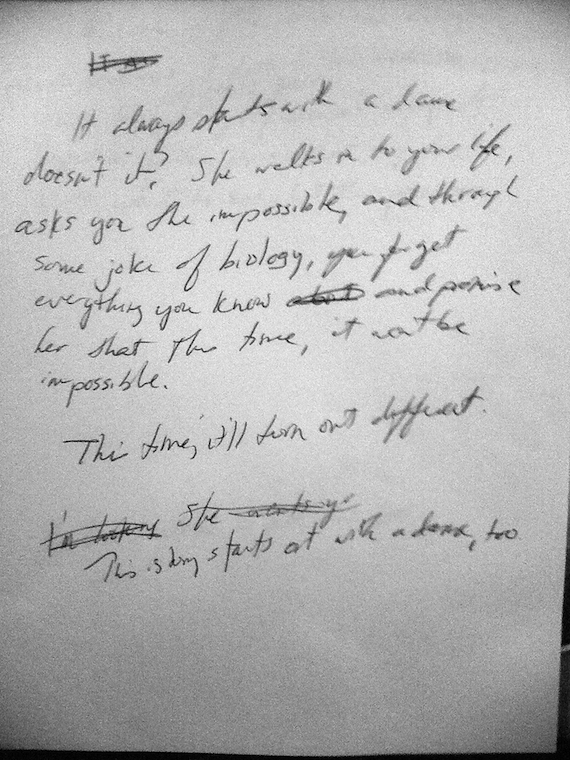
“For every book I publish,” a writing teacher once told me, “there’s one book I don’t.” At the age of eighteen, armed with a truly bad novel and a rather absurd sense of optimism, this line did not exactly resonate. But as I amassed rejection slips of every size—and once my first novel was rejected by a pantheon of New York publishers—I realized that nearly every writer has a novel in a drawer: a manuscript that, due to any number of reasons (rejection, timing, chance, diversion) never quite becomes a fully-formed book.
By the time an author’s debut hits bookstores, it’s very likely been preceded by a string of books that weren’t: doomed half-novels; slivers of inspiration that curled up and went to sleep; baggy short stories that grew into novellas, then stubbornly refused to grow any more. Some become first drafts, but never find the right agent; others find an agent, but not a publisher. In general, Novels in Drawers are an unruly breed, prone to shape-shifting and border-crossing. Some NIDs lie prone for years before being resurrected and, miraculously, finished; others have their characters or ideas recruited to breathe new life into a different manuscript.
What are we to do to with our books that weren’t? How can we learn from them, and when should we let them go? Below, five fiction writers on the story they still haven’t been able to tell.
 Kiese Laymon, How to Slowly Kill Yourself and Others in America
Kiese Laymon, How to Slowly Kill Yourself and Others in America
When I was in grad school, I wrote this five hundred-page novel about a round runaway character. I was sure that book was going to change the world. When I finally published Long Division, a book kinda-sorta about a round runaway character, it had literally three paragraphs from that five hundred-page novel that I knew was going to change the world. I needed to write every word of that novel but in the end, only a few paragraphs of it needed to be seen. The sad thing is that some people told me that way back then. I didn’t really listen.
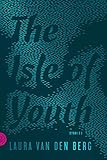
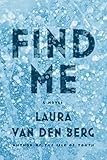 Laura van den Berg, The Isle of Youth
Laura van den Berg, The Isle of Youth
Six or seven years ago, I drafted a story called “What the World Will Look Like When All the Water Leaves Us” and turned it in for workshop. Amid the usual critiques, much of it helpful, were comments about how the story seemed “novelistic” and like it was “part of something larger.” Which, in hindsight, was a gentle way of saying it was way too fucking long and I had made some truly confounding choices in structure. But I did not have that hindsight back then, so I started thinking maybe this story could be “part of something larger,” that I should write past the end and see what happened. I made it about fifty pages before I realized I was on the verge of Death by Boredom. Though the story itself I would grow to love, I knew then that it was not “part of something larger,” but a shaggy dog of a short story searching for its final shape. I was reminded that the story is a very particular and singular kind of art—not a warm-up for the novel. When I began Find Me, my first novel, due out next year, it was never anything but a novel. For years my draft was messy and misguided and floundering, but at least I was always certain of one thing: I was not writing a short story.
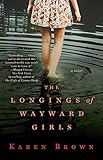 Karen Brown, The Longings of Wayward Girls
Karen Brown, The Longings of Wayward Girls
I hate to give up. If I start a novel, I finish it, which is why I have stacks of three-hundred-page manuscripts, all purporting to be books, all maintained in dark storage, queued up like records in an old jukebox awaiting their turn to play. Sadly for them, I’ve learned that a book isn’t finished simply because it’s finished, that it enters a stage of being we call a draft—a term I’m now quite familiar with—and that this has the potential to multiply, to become draft six, possibly draft seven. These abandoned novels might always be first drafts, but even in their rough, elemental state their characters still enact their complicated lives in various towns and houses, in relationships with various others. In them it is winter, it is an island in the Caribbean, it is a night club in South Florida in the 1980s. I am aware of their presence—miniature worlds in stasis, pending transformation into draft five and draft six—but I’m also cowed by the work required to get them there. It takes a certain bravery to dive back in, especially if you are the kind of person who hates to give up.
Since I now have a better concept of what “finished” entails I suspect the decision to revisit an old draft will depend on my sensibilities when I reread it—usually after years have passed. Maybe I hadn’t intended a certain relationship to carry much weight, but suddenly this relationship interests me, and I begin to imagine the story differently. I just finished a novel that involved several drafts (seven? eight?). I wrote it after a series of short stories set in a cold, bleak, upstate New York winter, and the focus had always been a love affair. Now, the story is about the relationship between two sisters—something I hadn’t even explored before—and this shift in focus has created an entirely new book.
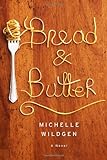 Michelle Wildgen, Bread and Butter
Michelle Wildgen, Bread and Butter
Food shows up in almost everything I write. Aside from the way the culinary world pleases me aesthetically, food is one of those universals that can be employed to explore almost anything, from family to religion to class to love. So why has a nonfiction book about my favorite subject eluded me? I have drawn up notes, gathered my essays and looked for their common threads, and examined my upbringing top to bottom, but I have yet to figure out the personal story my food life might tell or to find the external food story I feel compelled to dive into. It’s tempting to blame my too-normal Midwestern upbringing (shouldn’t someone have been curing a pig leg in the garage, maybe, or serving meals so spectacularly terrible that I could be perversely proud of them? But no one was, and my mom is in fact an excellent cook). But the truth is, my favorite pieces of writing about food are not about extreme cooking. Laurie Colwin wrote beautifully, hilariously, and movingly about everyday, English-inflected nursery food, and MFK Fisher’s most luminous and insightful essays are about the relationships among the diners more than the amazing dishes before them. I haven’t pinned it down yet, and maybe I never will, but even now that elusive food book seems so, so close—I just can’t quite see its shape.
 Karen Thompson Walker, The Age of Miracles
Karen Thompson Walker, The Age of Miracles
For a few years when I was in grad school, I kept coming back to a short story I’d tried to write about a modern day woman who starts wearing a homemade hair shirt like the ones people wore as penance in the Middle Ages: itchy, painful, and flea-infested. But I could never get the tone right. It kept coming off as more funny than dark, more ridiculous than bleak—and I wanted it bleak. It was liberating to give up on that story so that I could focus on others, and it helped me realize that throwing out a piece of writing can sometimes count as progress. It feels like backtracking, but it can ultimately be the way forward.
Image via Dan4th Nicholas/Flickr








